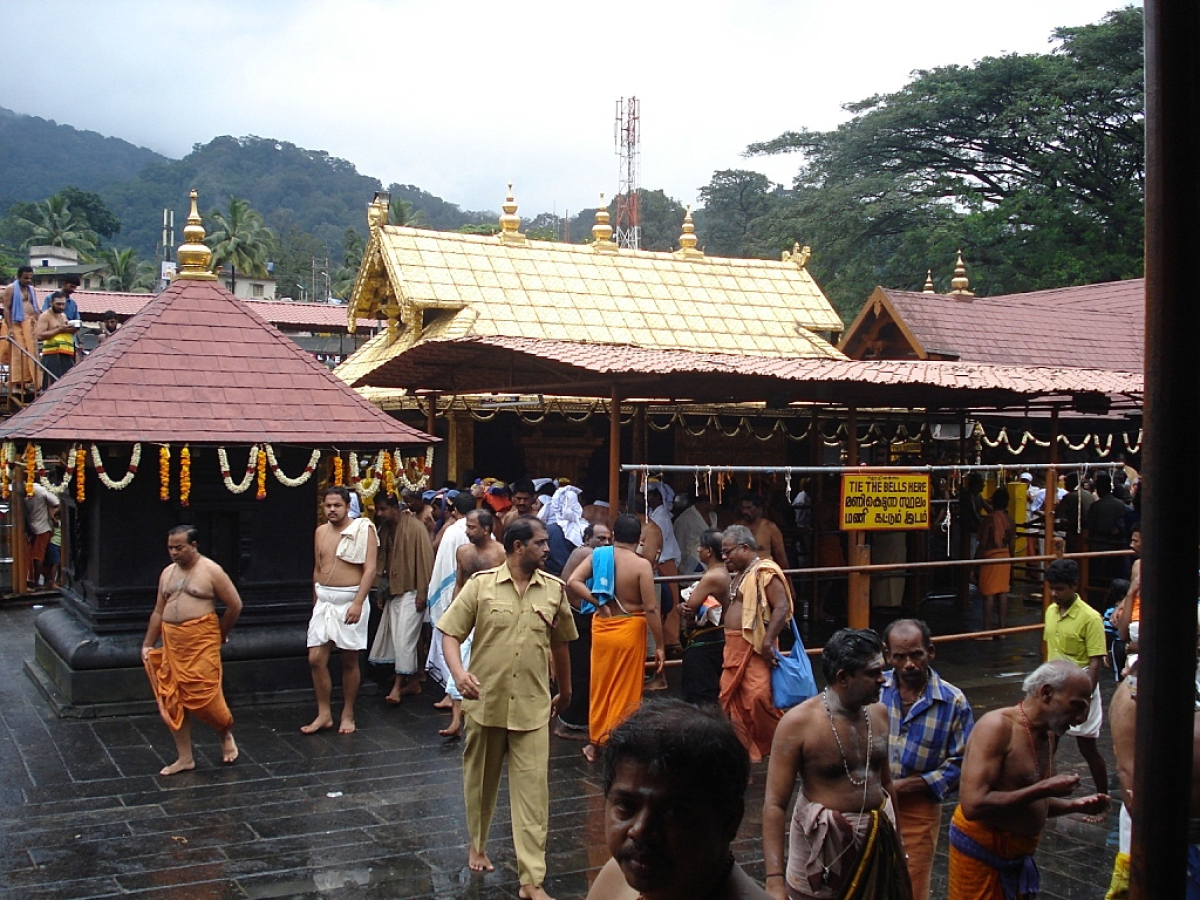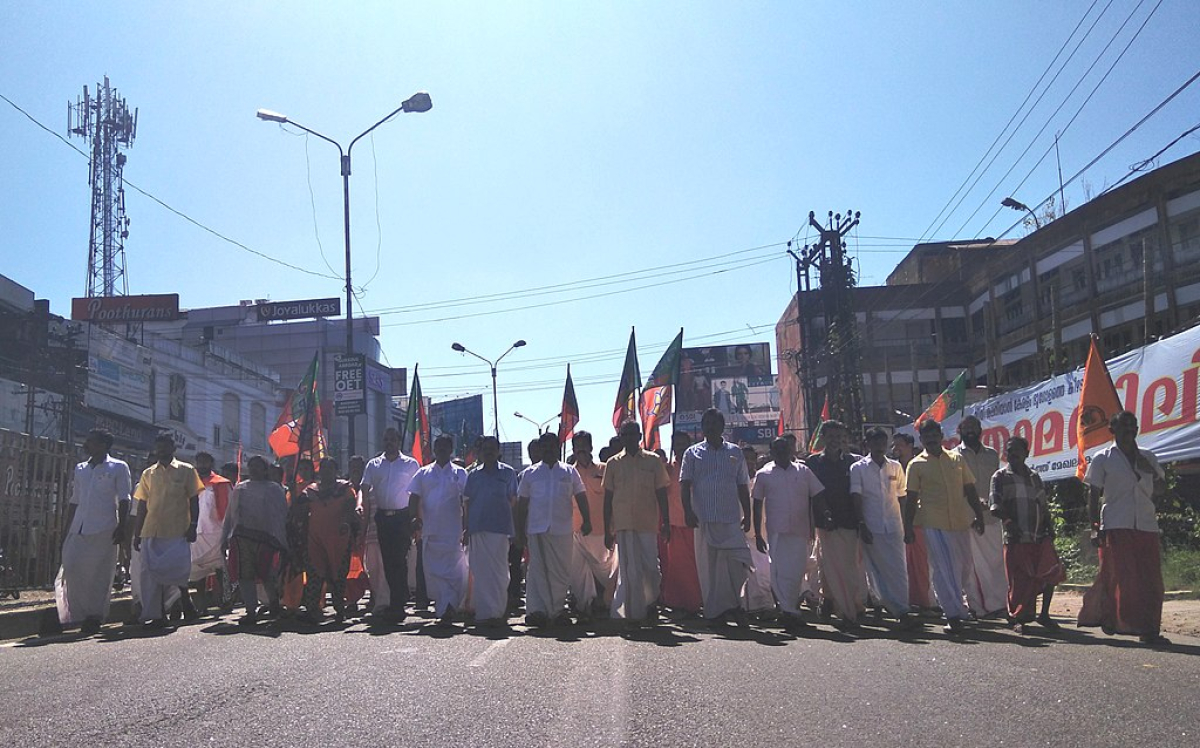Women Entry in Sabarimala Temple: State, Judiciary, and Religion
 Sabarimala Temple. Copyright: AnjanaMenon
Sabarimala Temple. Copyright: AnjanaMenonBy Roopesh OB
In early January, the media worldwide reported on political and religious turmoil around a temple in the southern Indian state of Kerala. The protests started with two women who had entered the Sabarimala Temple. They thus took the rights that the Supreme Court in India had just reaffirmed for women in September 2018, after the temple had long been accessible only to men.
Sabarimala Temple is a pilgrimage centre in southern state of India, Kerala. The principal deity, Lord Ayyappa is a perennial celibate by faith, which forms the ground for banning menstruating women from the temple. Sabarimala Temple is a predominantly male pilgrimage centre, which does not discriminate along caste and religious lines. This was one of its central features even before the temple opened for all Hindu castes (1936) in Kerala.
On September 28, the Supreme Court (SC) of India lifted the ban on women entry (between the ages of 10 and 50) in Sabarimala Temple. The High Court of Kerala had banned women entry in 1991. The petitioners approached the SC in 2006 based on constitutional rights of equality to lift the ban. A five-member SC constitutional bench underlined the equal rights of women in the temple by a majority verdict. This judgement triggered a huge amount of discontent, protest, violence, and mobilisation in Kerala. Finally, two women entered the temple on 3 January 2019. The state government officially claimed 17 women have entered the temple.
The issue highlights a complex relationship between state, judiciary, and religious actors. When the SC followed the constitutional spirit of equal rights, major political parties stood against the verdict. The leftist government of the state of Kerala proactively attempted to implement the verdict. They faced strong opposition from various community organisations, right wing Hindu nationalists, and a centrist party. However, Hindu nationalist central government openly criticised the verdict and the Kerala government's policy. The whole Sabarimala turmoil cannot easily be read as an imposition of secular policy over the religious and thus as a natural public religious response. It is secularity appearing as a conflict/conversation and reflects the attempt to transform religion itself through the modern interpretation. There are non-state actors including believers who support the secular values of equality in the religious arena.
Women entry was part of the pilgrimage until 1991. A believers’ organisation called Ayyappa Seva Sangham began to disrupt women entry in Sabarimala in 1982 and attained public attention in doing so. Members of the organisation are predominantly Nairs – upper caste Hindus. Following this incident, women entry began to come into lime light as a violation of the “traditional practice.” Here, the tradition was an invention at a particular point in history. Therefore, the verdict of the SC has resulted in the restitution of the old practice with the new interpretation based on constitutional values against the discriminatory practices.
The history of the Sabarimala complicates the idea of religion and its practice. Historical and administrative records show that Sabarimala was a small worship place of Malayaraya - a tribal community. The pilgrimage widely attracts “lower caste” Hindus across Kerala, but rarely Brahmins. Scholars have noted the Buddhist influence and the cult’s strong relationship with Muslims and Christians. The pilgrims first visit a Muslim shrine, where a Muslim priest conducts rituals, before proceeding to the temple. This symbolises the interreligious and interfaith relationship that lies at the heart of Sabarimala temple. The protesters were, therefore, representatives of an invented tradition. The architectural features of the temple came to be considerably altered after 1950.
The spontaneous popular sentiment and the recently organised protests against the verdict need to be distinguished. Though popular sentiment against the verdict was strong, there was no seriously organised opposition in the initial days. The Hindu upper castes began the protest, and then Hindu nationalists joined them. However, another section of masses (the silent believers) were not against the verdict. The Hindu community got divided into supporters and opponents to women entry. Dalits and tribal organisations openly supported the women entry. They also demanded equal rights in temple activities. Such sections continuously attempted to enter the temple and were blocked by violent protesters. However, women were successfully able to enter the temple. Religion cannot be treated as a homogeneous entity in the Sabarimala case. This is an interesting site of secularity, which has redefined the rituals, and religious practices according to the modern egalitarian values.
Roopesh OB is currently doing his PhD at the Department of Humanities and Social Sciences at the Indian Institute of Technology Bombay. His study focusses public religion in the context of contemporary spike in Hindu temple activities in South India Kerala.
He has recently commented comprehensively on the Sabarimala case: OB, Roopesh. “Sabarimala Protest: Politics of Standardising Religious Pluralism.” Economic & Political Weekly LIII, no. 49 (2018): 12–16. Read the whole discussion in the Economic & Political Weekly.
 BJP Harthal Protesting against Sabarimala Women Entry at Angamaly. Copright: KannanVM
BJP Harthal Protesting against Sabarimala Women Entry at Angamaly. Copright: KannanVM


